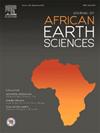应用模糊层次分析法和频率比在地中海沿海含水层中进行地下水补给带制图——以突尼斯东北部为例
IF 2.2
4区 地球科学
Q2 GEOSCIENCES, MULTIDISCIPLINARY
引用次数: 0
摘要
由人口增长、气候变化、工业化和农业发展驱动的全球水资源压力,由于地下水的过度开采和蓄水层的枯竭而加剧。地下水补给对于确保水的可持续性和保护沿海水资源至关重要。利用地理信息技术(GIS)和模糊逻辑、层次分析法(AHP)和频率比法(FR)三种数值方法,对突尼斯Aoussja Ghar El Melh沿海地区的含水层适宜带进行了评价。目的是划定重要的地下水补给区。研究结果揭示了三种不同的充电能力类别。模糊逻辑分析表明,以砂岩冲积层和中部平原砂质灰土等岩性特征为特征的研究区约有72%的区域适合地下水潜势带。相比之下,AHP模型显示的面积约为79%,FR模型显示的面积为48%。这些变化受该地区岩性和水文地质特征的影响。对22个井位的验证表明,AHP最准确(AUC = 91%),其次是模糊逻辑(AUC = 86%)和FR模型(AUC = 70%)。Fersi方程的应用显示出与AHP方法相似的强相关性和空间分布。研究结果表明,模糊逻辑模型和FR模型在确定GWPZ上是有效的,但其效果不如AHP方法,AHP方法为选择补给点提供了更精确的建议。农业地区的地下水污染和盐碱化等环境风险突出了土地资源管理的必要性。最后的地图作为规划含水层补给项目的指导方针,并强调有必要制定规章和限制抽水,以防止过度开采和盐水入侵。这一初步评估强调了实施保护措施和补给计划的重要性。本文章由计算机程序翻译,如有差异,请以英文原文为准。
Groundwater recharge zone mapping in a coastal mediterranean aquifer applying fuzzy and analytical hierarchy process and frequency ratio: A case study of northeast Tunisia
Global water stress, driven by demographic growth, climate change, industrialization, and agricultural development, is exacerbated by excessive groundwater extraction, depleting aquifer storage. Groundwater recharge is crucial for ensuring water sustainability and preserving coastal water resources. This study assess aquifer suitability zones of the Aoussja Ghar El Melh coastal region in Tunisia using geographic information techniques (GIS), and three numerical methods: Fuzzy Logic, Analytical Hierarchical Process (AHP) and Frequency ratio (FR) method. The aim is to delineate significant groundwater recharge areas. The findings reveal three distinct recharge capacity classes. Fuzzy Logic indicated that a approximately 72 % of the study area, characterized by lithological features like sandstone alluvium and sandy marly soils in central plains, is suitable for groundwater potential zones (GWPZ). In contrast, the AHP indicates about 79% of the area, while FR model indicates 48%. These variations are influenced by the region's lithological and hydrogeological characteristics. Validation against 22 well locations show AHP as the most accurate (AUC = 91%), followed by Fuzzy Logic (AUC = 86 %) and the FR model (AUC = 70%). The application of the Fersi equation shows a strong correlation and spatial distribution similar to the AHP approach. This study concludes that while the Fuzzy Logic and FR models are valid for identifying GWPZ, they are less effective than AHP method, which provides refined recommendations for selecting recharge sites. Environment risks such as groundwater contamination and salinization in agricultural areas highlight the need for land resources management. The final map serves as a guideline for planning aquifer recharge projects and emphasizes the necessity of regulations and pumping limits to prevent overexploitation and saltwater intrusion. This preliminary assessment underscores the importance of implementing protective measures and recharge programs.
求助全文
通过发布文献求助,成功后即可免费获取论文全文。
去求助
来源期刊

Journal of African Earth Sciences
地学-地球科学综合
CiteScore
4.70
自引率
4.30%
发文量
240
审稿时长
12 months
期刊介绍:
The Journal of African Earth Sciences sees itself as the prime geological journal for all aspects of the Earth Sciences about the African plate. Papers dealing with peripheral areas are welcome if they demonstrate a tight link with Africa.
The Journal publishes high quality, peer-reviewed scientific papers. It is devoted primarily to research papers but short communications relating to new developments of broad interest, reviews and book reviews will also be considered. Papers must have international appeal and should present work of more regional than local significance and dealing with well identified and justified scientific questions. Specialised technical papers, analytical or exploration reports must be avoided. Papers on applied geology should preferably be linked to such core disciplines and must be addressed to a more general geoscientific audience.
 求助内容:
求助内容: 应助结果提醒方式:
应助结果提醒方式:


